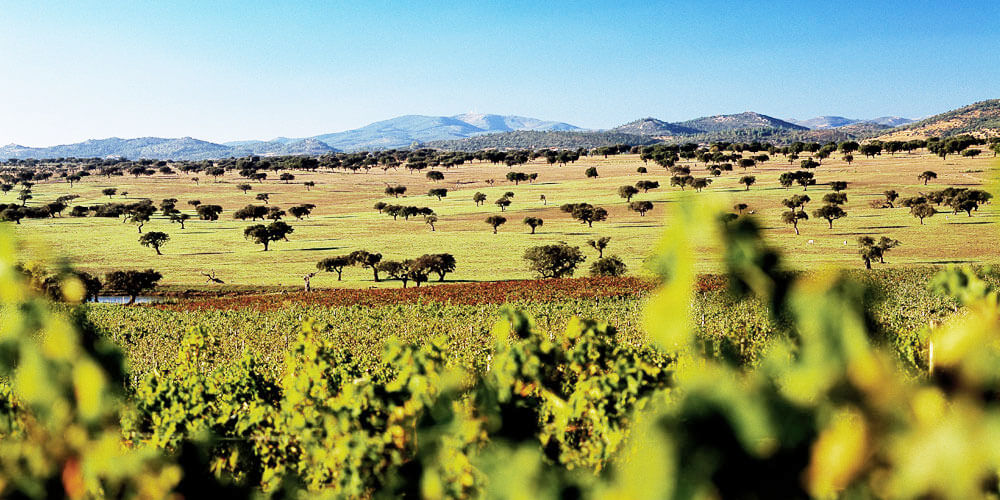
Scala Coeli Tinto 2020
- Red wine
- dry
- 2020
- Portugal - Alentejano
- Touriga Nacional
Ready to ship today,
Delivery time appr. 1-3 workdays

Monte Velho Tinto Herdade do Esporão 2023
- Red wine
- dry
- 2023
- Portugal - Alentejano
- Alicante Bouschet, Aragonez, Shiraz/Syrah, Touriga Nacional, Trincadeira
- Wine Spectator: 85 Punkte
- Revista de Vinhos: 15 Punkte
Ready to ship today,
Delivery time appr. 1-3 workdays

Herdade dos Grous Branco 2023
- White wine
- dry
- 2023
- Portugal - Alentejano
- Arinto, Roupeiro
- Robert Parker: 87 points
Ready to ship today,
Delivery time appr. 1-3 workdays

Herdade dos Grous Tinto 2022
- Red wine
- dry
- 2022
- Portugal - Alentejo
- Alicante Bouschet, Aragonez, Shiraz/Syrah, Touriga Nacional
- Wine Magazine: 16 Punkte
Ready to ship today,
Delivery time appr. 1-3 workdays
More Information
Just five percent of the area is planted with vines. One of the most exciting areas is around the town of Portalegre in the northeast on the Spanish border. This high-altitude mountainous region is cooler than the rest of the Alentejo and thus has the potential for very elegant wines. In contrast, the central hill country, near the towns of Évora, Borba, Reguengos and Estremoz, is warmer. Wines with well-balanced acidity are produced there. Even further south, near the town of Beja, it can even get really hot. Nevertheless, modern vinification techniques make it possible to produce easily digestible white wines as well as full-bodied red wines. Granite, slate and limestone soils alternate.
Between the towns of the Alentejo, one can drive for miles through impressive cork oak forests, shimmering green olive groves and delicately scented lavender fields without encountering a single soul. Wheat, corn and sunflowers color the landscape golden yellow - now and then broken only by a green vineyard with sometimes wonderfully old vines.
DOC Alentejo wines may only be produced in specific areas within the Vinho Regional Alentejo. In order to regulate viticulture and to do justice to the different microclimates, the Alentejo DOC has been divided into eight sub-regions (Portalegre, Borba, Redondo, Vidigueira, Reguengos, Moura, Évora and Granja/Amareleja), most of which are located in the center of the region. All DOC wines are given the designation DOC Alentejo, sometimes supplemented with the name of the sub-region. A growing number of regional wines run under 'Vinho Regional Alentejano'. On the one hand, this is due to the fact that some of the grapes do not come from the DOC areas. On the other hand, many winemakers are also consciously taking advantage of the greater leeway offered by the VR regulations. For example, many more grape varieties, including international varieties such as Syrah, are permitted.
The best time to visit the Alentejo is in April or May, when everything blooms and smells aromatic, before the onset of the summer drought. Less than five percent of Portugal's population lives in this region, and only occasionally do you see farmhouses on small hills. The Alentejo region is known for its beef and for its succulent, aromatic ham, as well as its pork, which comes from black pigs that live in the forests and feed on acorns.
Main white grape varieties (vary by sub-region):
Arinto, Antão Vaz, Roupeiro, Fernão Pires, Perrum.
Red main grape varieties (vary by subregion):
Aragonez, Trincadeira, Castelão, Alfrocheiro, Alicante Bouschet.

